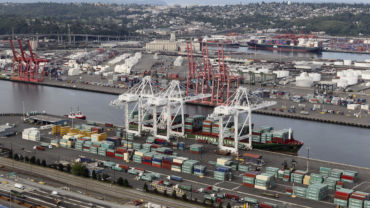Let’s say a corporate tax regime was so complex, circuitous, and onerous that potential product movement could produce more than 200,000 possible outcomes. Welcome to the world of transactional tax determination in the oil & gas sector
The stakes, of course, are high — as they are with any aspect of corporate tax compliance. Get a single step wrong in the process and you could be in violation of statutory regulations, pay the wrong amount of tax, lose the trust of customers you collected tax from, and incur the cost of cleaning up the mess (including audit-related interest and penalties.)
Such errors and inefficiency are more likely when oil & gas companies manage their motor fuel tax compliance with manual processes and siloed, stand-alone, homegrown systems that are costly and time-consuming to maintain.
On the positive side, the fuel tax determination workstream is a perfect problem for computer code consisting of a series of if/then statements with thousands of possible permutations that are no sweat for an algorithm backed with logic that reflects the latest rules and rates.
To illustrate the point, here is a simplified view of some of the questions that must be addressed to accurately calculate and remit sales, use, and excise taxes for a commodity as ubiquitous and fundamental to the economy as gasoline.
The Federation of Tax Administrators recognize at least 46 various motor fuel commodities, so the first tax compliance question is, “What do we mean when we say ‘gasoline’? The taxpayer repeats the process for other basic fuels such as diesel, jet fuel, aviation gasoline, compressed natural gas, and liquified petroleum.
Next, we must determine where the “imposition’ of tax occurs. Tax implications differ depending on whether a petroleum product is being sold wholesale from the terminal system (known as “above the rack”) or after the fuel has been removed from the terminal system (below the rack).
What about point of title transfer? The delivery point affects taxability because it impacts which jurisdictions, taxing authorities, and tax type are triggered for each transaction.
Is it an interstate or intrastate transaction? What states’ tax regulations are triggered and have jurisdictional authority? Which municipal, county, state and federal taxing authorities touch the transaction and what taxes or fees are triggered at each level of authority?
What are the tax rates and fees for each specific product or product type? It’s critical for fuel suppliers and distributors to hold the correct licenses from the relevant local, state, and federal authorities to minimize their tax liability and be in compliance. Depending on a company’s tax footprint, there can be more than 1,000 motor fuel licenses in the U.S. that determine when non-taxable transactions, tax exemptions, and exceptions apply.
When you examine all the possible combinations of these variables you can have more than 200,000 scenarios. Such tax compliance responsibilities benefit from the efficiency and accuracy delivered by automated tax solutions. That’s why oil & gas companies are increasing their investment in digital technologies to improve operational efficiency.
A 2015 study from Accenture and Microsoft found more than 60% of oil & gas companies intended to increase spending on digital technologies in the next three to five years. It’s important for finance and tax leadership to be part of those budget allocation discussions to advocate for the benefits of tax technology that is backed by comprehensive, up-to-date content which is integrated with the company’s ERP system.
As an example, the need to migrate to SAP’s cloud-based S/4 HANA ERP is prompting many corporate IT departments to review and overhaul their financial and back office systems — including their current oil & gas tax systems.
To address oil and gas companies’ primary tax management challenges an automated system should take into account data variables such as:
-
-
- movement or sale of the product;
- mode of transportation;
- title transfer locations;
- overlapping tax jurisdictions;
- product-based tax rules;
- the type of transaction;
- its origin and destination;
- buyer/seller licensure; and
- non-taxable transactions as well as exemptions and exceptions.
-
It also should maintain up-to-date rates, rules, taxability, jurisdictional tax scheme changes, and regulatory and legislative changes. Unlike other industries, the oil & gas sector must contend with monthly tax rate adjustments in multiple states that tie tax rates and fees to commodity prices.
In addition, transaction data will need to be collected, maintained, and reported as necessary to aggregate and preserve the required reports and returns.
In summary, corporate tax and finance departments spend a lot of time and resources grappling with these tasks. Tax automation and governance improves efficiency, reduces errors, and frees up professional managers and staff to deliver greater strategic value.







